After decades of neglect, the iconic “Pabellón de los Hexágonos” in Madrid’s Casa de Campo is finally reopening its doors with an exhibition by one of today’s most prominent contemporary artists, Pol Taburet.
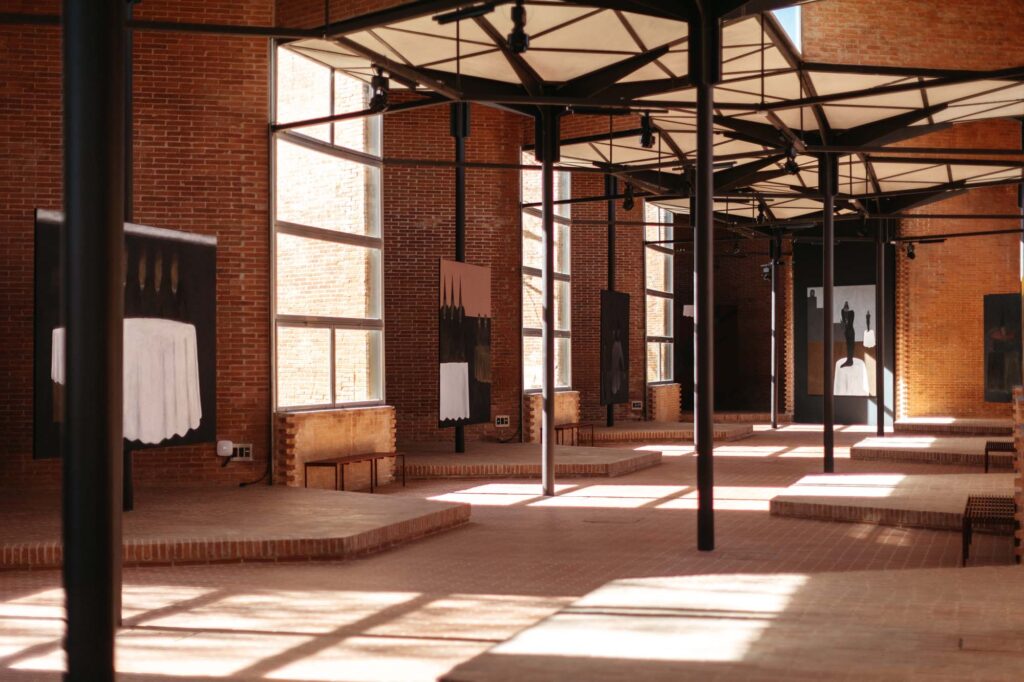
Designed in 1958 by architects José Antonio Corrales and Ramón Vázquez Molezún, the pavilion is a masterpiece of modular architecture. Its striking structure consists of 130 hexagons supported by metal pillars that channel rainwater, complemented by brick walls and aluminum windows that create an open and luminous space.
Practical info
“Oh, If Only I Could Listen”: A Journey Through Life and Death, Pol Taburet
March 5 – April 20, 2025
Pabellón de los Hexágonos
Moncloa – Aravaca, Madrid
Spain
Originally built for the Brussels World’s Fair, where it won the Architecture Prize—beating even the famous Atomium—the pavilion was dismantled after the event and relocated to Casa de Campo in Madrid. Over the years, it hosted various fairs under Franco’s regime and later became a venue for different events, including the Spanish Communist Party’s celebrations.
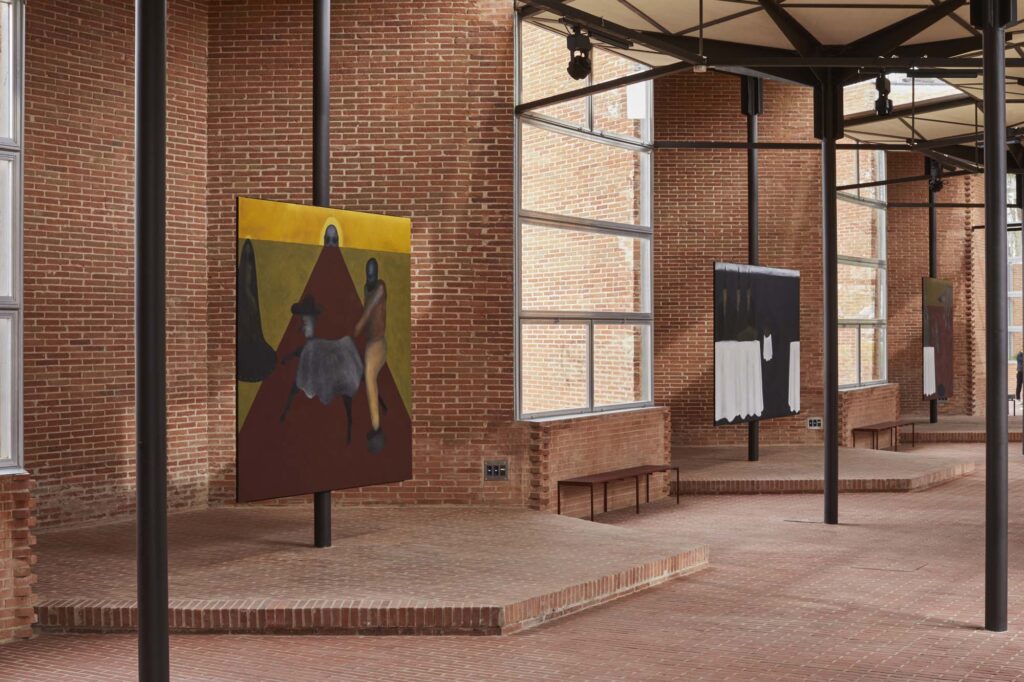
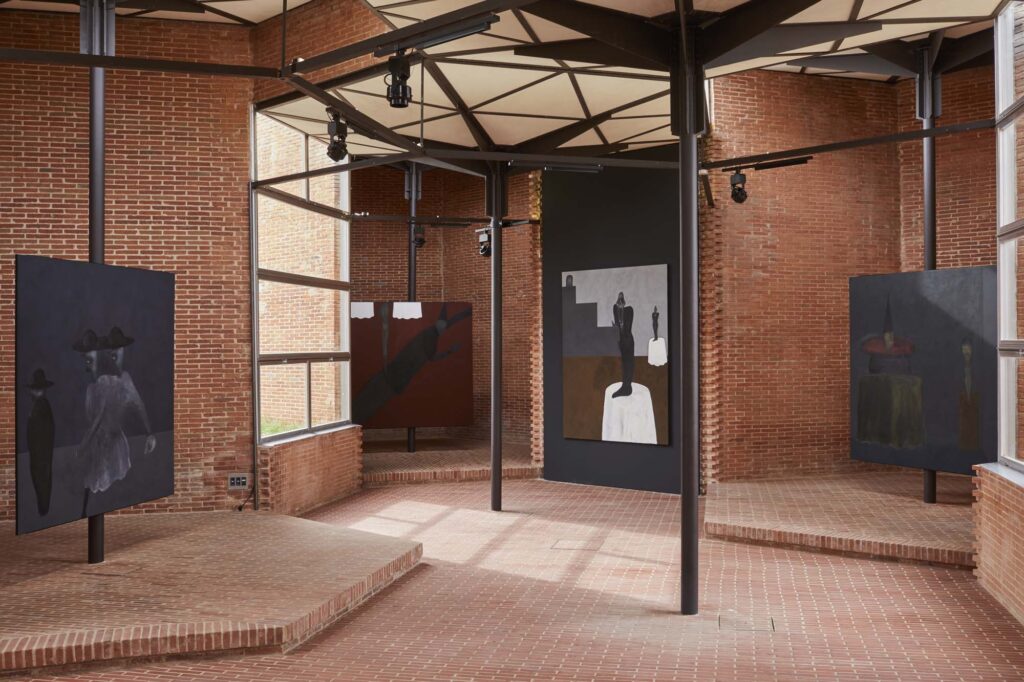
Despite its architectural and cultural significance, the pavilion suffered from severe deterioration due to years of municipal neglect. However, in 2023, a long-overdue restoration project began. Given the vast size of the building—3,020 square meters—the renovation is being carried out in phases, with full completion expected by 2027. Fortunately, part of the pavilion has already been reopened, including the main entrance, atrium, and one of the galleries, which now houses a remarkable exhibition.
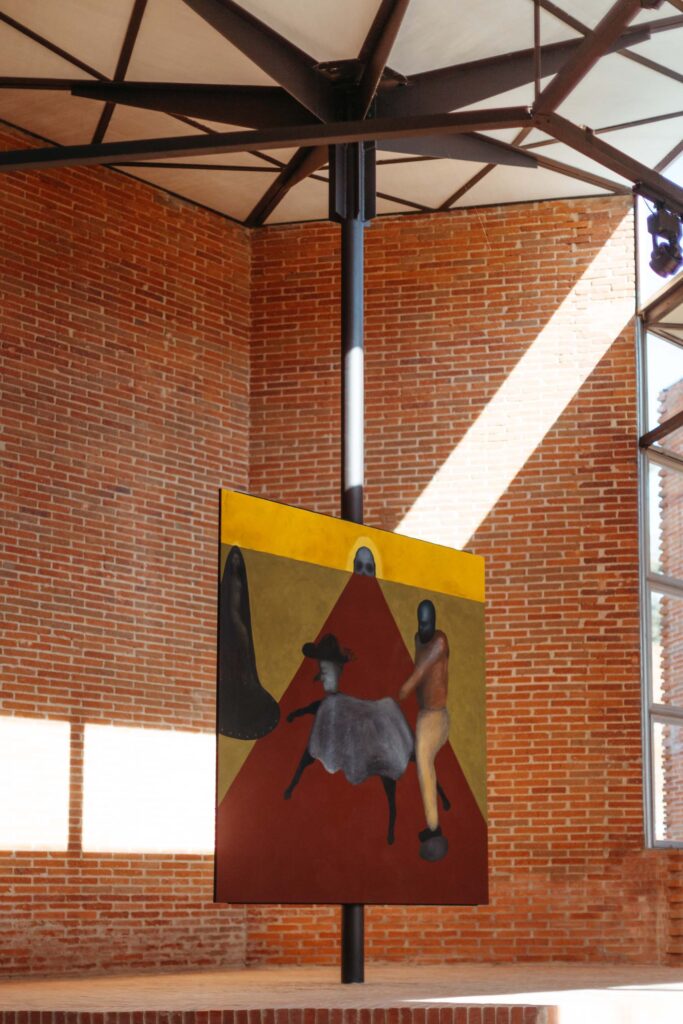
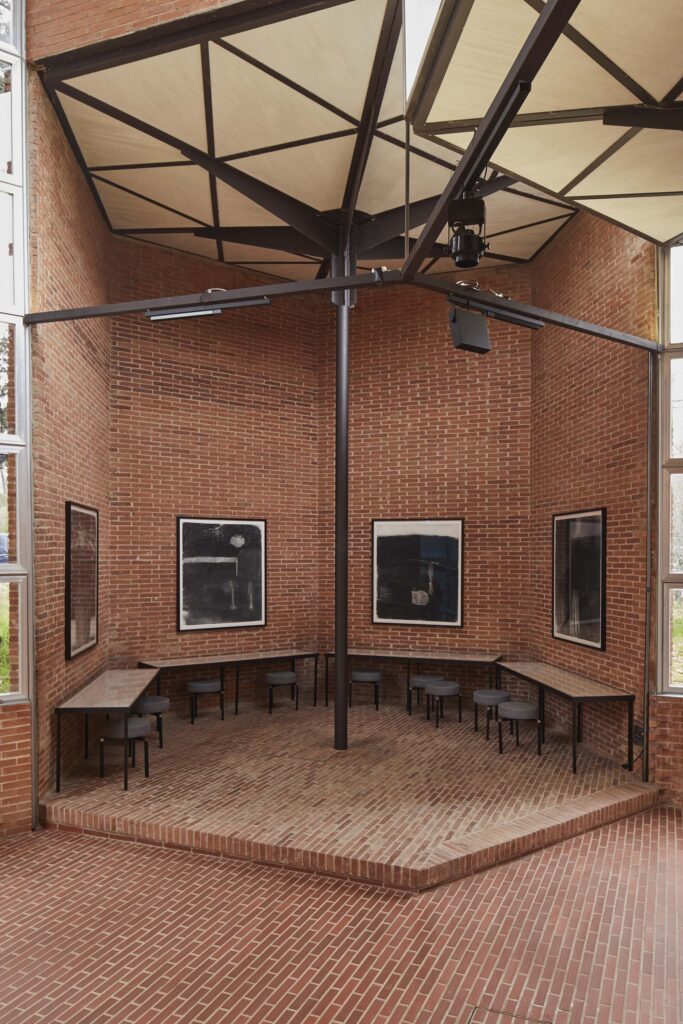
“Oh, If Only I Could Listen”: A Journey Through Life and Death
The reopening exhibition, Oh, If Only I Could Listen, presents the work of French artist Pol Taburet (Paris, 1997). Featuring ten large-scale paintings, preparatory sketches, and a series of lithographs—his first-ever works using this technique—the collection was printed at Madrid’s historic Imprenta Municipal-Artes del Libro on Concepción Jerónima Street.
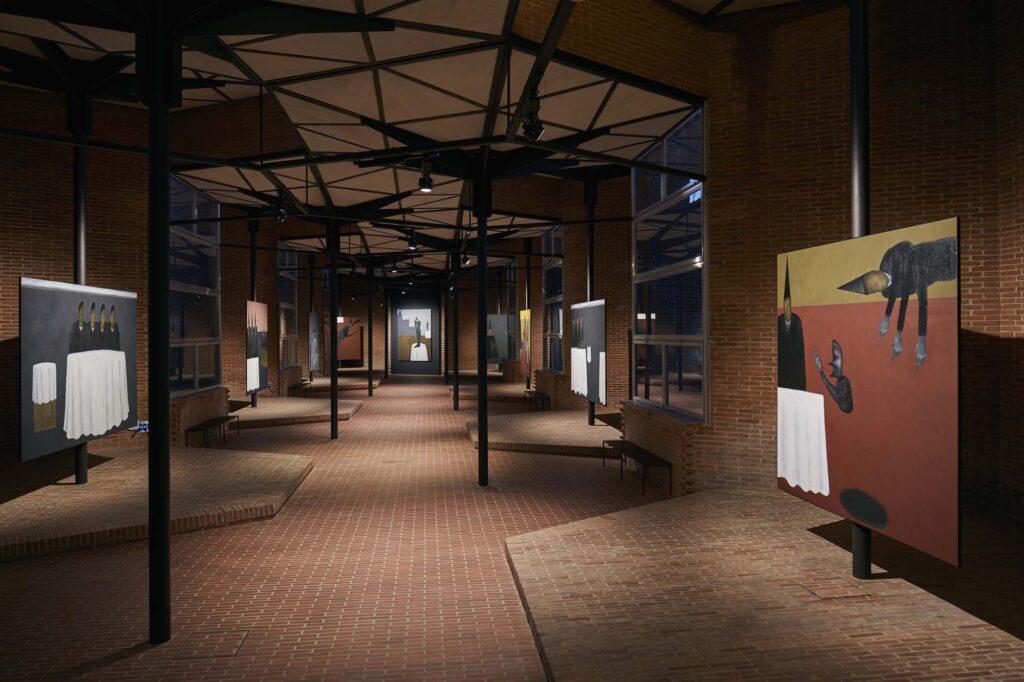
Curated by Hans Ulrich Obrist, artistic director of London’s Serpentine Gallery, and produced by Isabela Mora, the exhibition is a collaboration between the Sandretto Re Rebaudengo Foundation and the Madrid City Council. This partnership continues the foundation’s commitment to the Spanish art scene, which began in 2017 with the opening of its Madrid headquarters, alongside its Turin base.
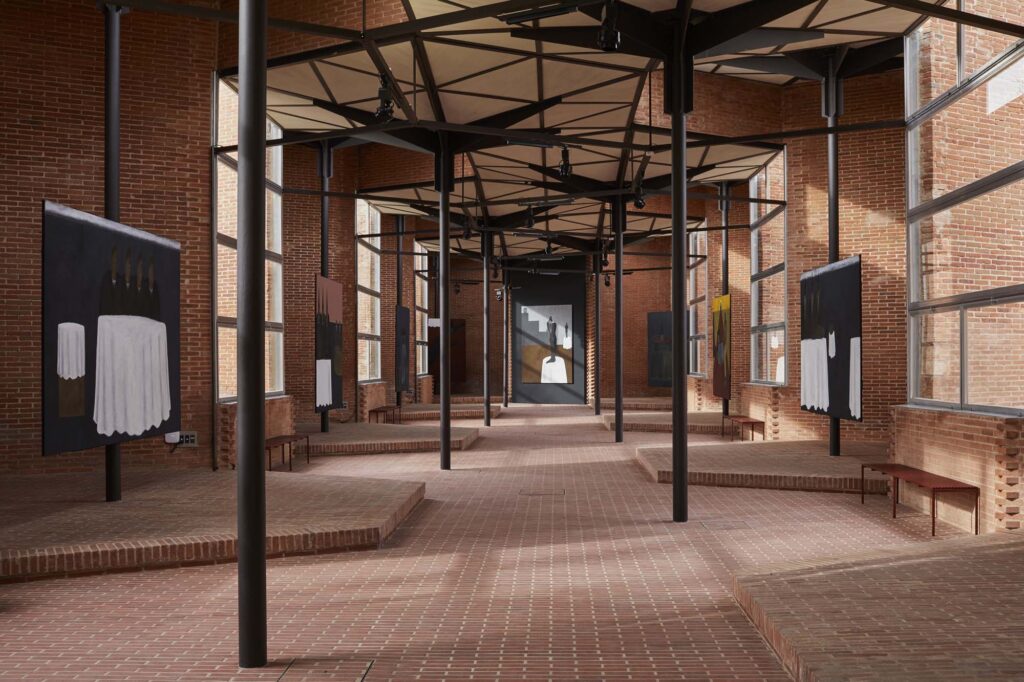
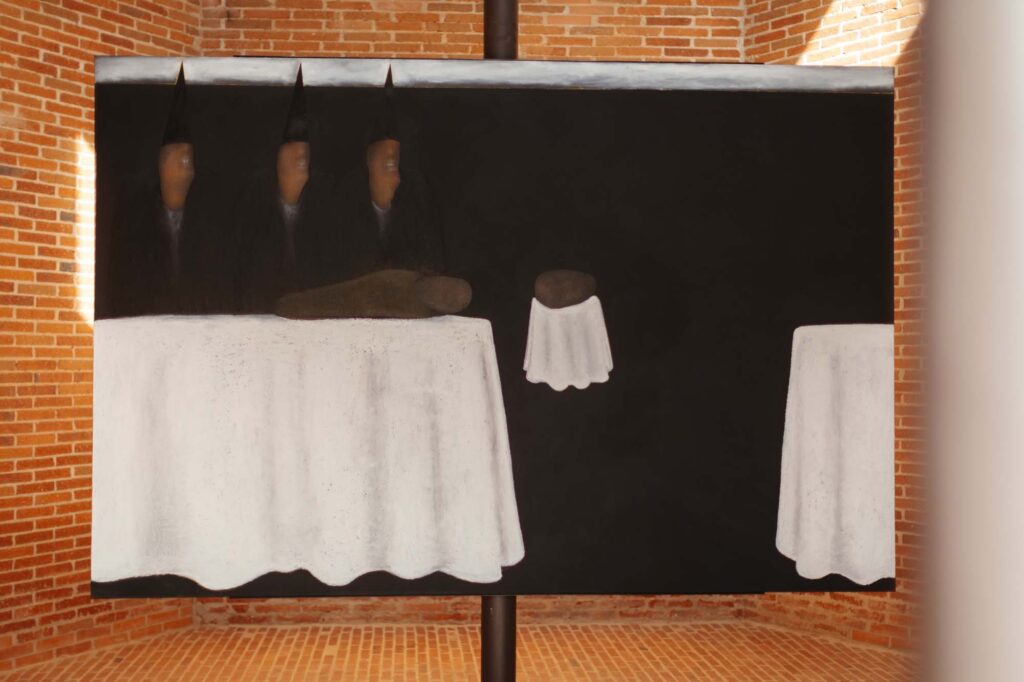
As Taburet’s fifth exhibition supported by the foundation, Oh, If Only I Could Listen is one of the season’s most anticipated art events. Opened on the eve of the ARCO art fair and running until April 20, the show introduces Madrid audiences to an artist renowned for his unique technique—a fusion of acrylic brushwork, textures, and airbrush effects. His compositions frequently reference his Caribbean heritage, Haitian culture, and syncretic religions such as Vodou.
A Darker Palette and Floating Paintings
For this exhibition, Taburet has explored an unusually dark color palette, shifting away from his signature greens, reds, and yellows. Instead, the works feature deep ochres, an influence he attributes to his visits to the Prado Museum and his admiration for Goya—particularly Los Caprichos and the Black Paintings.
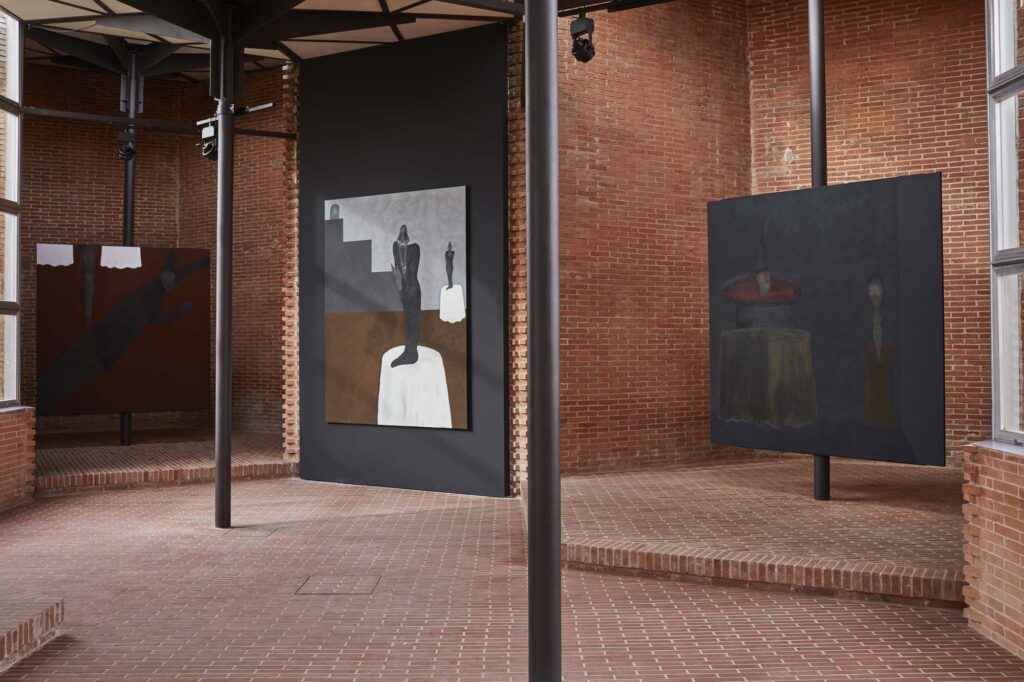
During the exhibition’s presentation, the artist, visibly moved, spoke about the emotional depth of his work, describing the figures in his paintings as “magical creatures in constant transformation,” reflecting themes of life and death. He also emphasized how the pavilion itself played an essential role in shaping the show’s layout, rather than serving as a mere exhibition space.
Curator Hans Ulrich Obrist noted that Taburet drew inspiration from a Pierre Soulages installation, where paintings were suspended from cables to create a floating effect. Similarly, Taburet has incorporated the pavilion’s metal columns into his display, producing a sense of weightlessness and enhancing the immersive experience. The exhibition also includes a specially commissioned sound piece by Juan Manuel Artero and a bilingual Spanish-English catalog featuring texts by Ben Okri, Juliette Lecorne, Matthieu Peck, and Guillaume Blanc-Marianne.

